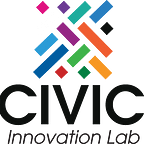How Artists Are Embracing Digital Technology
It goes without saying, but we’ll say it anyway: We are in the digital age, a time when an (overwhelming) amount of information is available to many people, largely due to computer technology. This current wave of change, marked by the proliferation of technology and digital devices in everyday life, has had a profound impact on our individual lives and is visible in every aspect of human endeavor, including the arts, transforming creative economies across the world.
Art history shows that artists have always sought new art forms and unusual means to express their artistic principles, and technology has over the years provided artists with new ways to express themselves. For without the invention of painting tubes, Impressionists like Claude Monet would not have painted such iconic art as Impression, Sunrise (1872). And without the silk-screen printing technology (invented by the little-known American portrait painter John G. Rand), would Andy Warhol’s Oeuvre collection have developed in the same rapid fashion? We think not.
Over time, since the first digital art was created in 1967 by Kenneth Knowlton and Leon Harmonart, art and technology have become more and more intertwined, with many contemporary artists adopting new types of media to create their work. From laser-printed ceramics to code-generated paintings to music created by AI technology, creatives are using technology to push the boundaries of traditional practices.
Nowadays, artists don’t use digital devices merely as aids in their creative process; many art professionals are transforming the art world by leveraging cutting-edge technologies and tools as an art and design medium, allowing them to create striking, immersive, and highly engaging art pieces. From virtual reality, augmented reality, and artificial intelligence to digital designs and 3D printers, technologies have indeed disrupted the contemporary art and art market in so many different ways, changing how art is created, consumed, and shared in our connected world. With Assemblace, created by Umbrellium, an award-winning pioneer in urban design and technology, users can create light structures and floor drawings by moving through colored laser beams and smoke. Another impressively innovative digital art creation is Rising Colorspace, an abstract artwork painted on the wall of a Berlin gallery. This iconic painting, created by artists Julian Adenauer and Michael Haas, is always changing, thanks to a wall-climbing robot called a Vertwalker armed with a paint pen and a software program instructing it to follow a certain pattern. The robot is constantly overwriting its own work, cycling through eight colors as it glides up vertical walls for two to three hours at a time before it needs a battery change. “The process of creation is ideally endless,” Haas, one of the creators, explains. And, finally, there is Tilt Brush, Google’s VR painting technology, which is now at the Discovery Museum and currently blowing the minds of visitors. With Tilt Brush, visitors to the Discovery Museum can unleash their creativity with three-dimensional strokes, stars, and even fire in a 3D space, where your palette is your imagination and the possibilities are endless.
This digital revolution isn’t limited to painting. Creatives in the music industry also have been experimenting with modern technology, including artificial intelligence, to compose and perform music in ways that humans simply cannot. Bryan Eno, an English musician, released a generative version of his 26th studio album, Reflection, on an app that plays infinitely and changes the music depending on the time of day. Break Free is an AI-composed album by Taryn Southern, an American singer and songwriter. Southern was the first pop star to compose and produce an album entirely through AI, called I Am AI. We could go on, but you get the idea now. These fascinating stories of creative genius prove how technology is transforming the creative world and the perception of art (in all its forms).
Technology brings masterpieces closer to the audience, helping us understand the artistic vision and its history. We are excited to see where the application of advanced technology in art is going to take us next. Whatever the future holds, we are sure that it will continue to transform how artists express and share their creative force to inspire and influence the best of humanity. And Art Tech District, a haven for creatives and tech heads, will be here, providing the enabling environment for art and technology to flourish.
